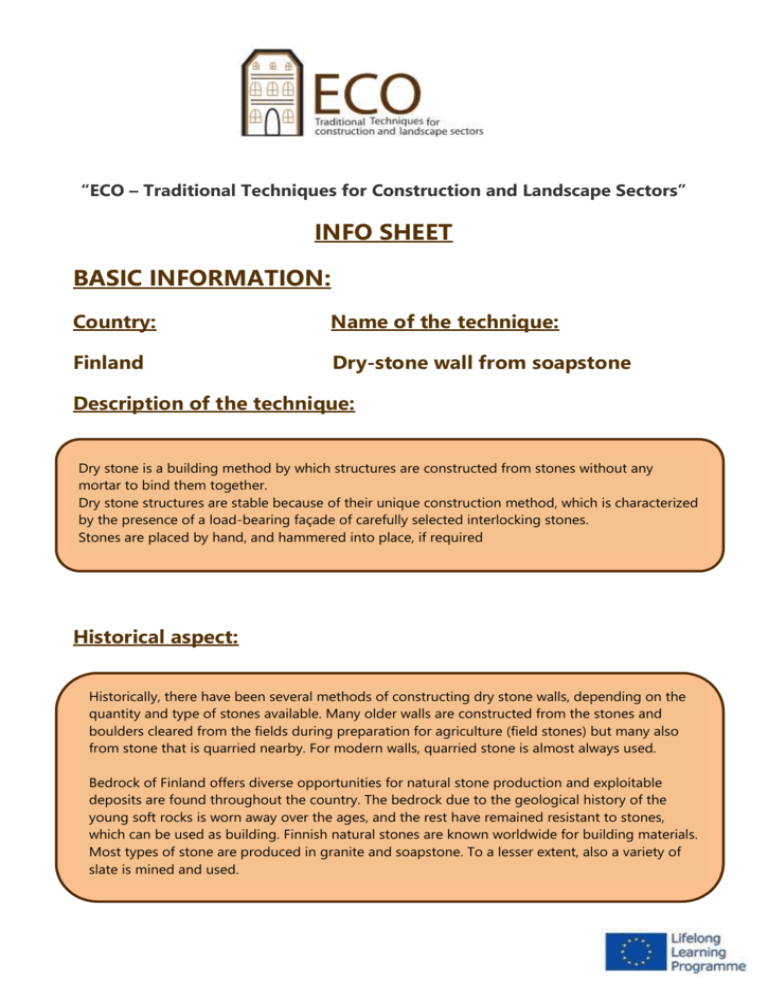Dry walling from soapstone - Eco-construction
advertisement

“ECO – Traditional Techniques for Construction and Landscape Sectors” INFO SHEET BASIC INFORMATION: Country: Name of the technique: Finland Dry-stone wall from soapstone Description of the technique: Dry stone is a building method by which structures are constructed from stones without any mortar to bind them together. Dry stone structures are stable because of their unique construction method, which is characterized by the presence of a load-bearing façade of carefully selected interlocking stones. Stones are placed by hand, and hammered into place, if required Historical aspect: Historically, there have been several methods of constructing dry stone walls, depending on the quantity and type of stones available. Many older walls are constructed from the stones and boulders cleared from the fields during preparation for agriculture (field stones) but many also from stone that is quarried nearby. For modern walls, quarried stone is almost always used. Bedrock of Finland offers diverse opportunities for natural stone production and exploitable deposits are found throughout the country. The bedrock due to the geological history of the young soft rocks is worn away over the ages, and the rest have remained resistant to stones, which can be used as building. Finnish natural stones are known worldwide for building materials. Most types of stone are produced in granite and soapstone. To a lesser extent, also a variety of slate is mined and used. Tools and materials: Stones in different sizes: large, medium, and small stones. Your wall can be no wider than the longest stones you have, so you'll need to check your pile of material to see what's available before marking out String to mark out the area for the wall, chalk to draw lines on the ground, wooden stakes and a hammer Step-by-step instructions: 1 If stone is to be laid against a structural backer, verify that backing is plumb and that all bearing surfaces are level 2 Sort out your stones by sizes and clean of loose fractures and other foreign matter 3 Use higher rise stones and that lie flatter at the base to add stability 4 Each stone shall balance on its own, using shims to ensure stability as needed 5 It is important to build up outside corners with larger and longer stone pieces 6 Lay stone in random lengths taking care to avoid vertical joints by overlapping each joint with the stone above 7 Uniformly distribute colour range of stone over total area of work 8 Joints to be tight as stone will allow. Sawing or grinding of stone high spots shall be allowed, but these surfaces may not be exposed. Other information about the technique One of the best things about dry-stone walls is that they're usually built from local stones. Using materials made locally is better for the environment (energy isn't wasted transporting heavy building materials over long distances). It also helps places to retain their distinctive character and charm. Dry-stone walls built in one place may look very different from those built elsewhere, simply because the stones are a different shape, size, or color. In some places, the natural stones are like small cobbles and dry-stone walls reflect this. Elsewhere, the stones may be chipped from rocks in local quarries to make bigger and squarer pieces








